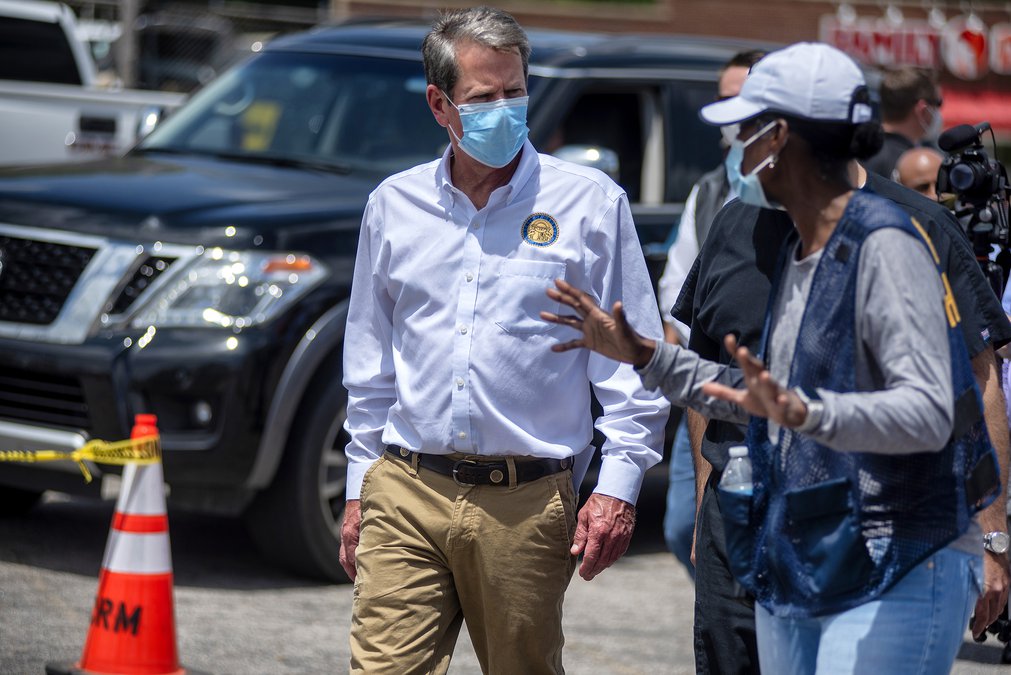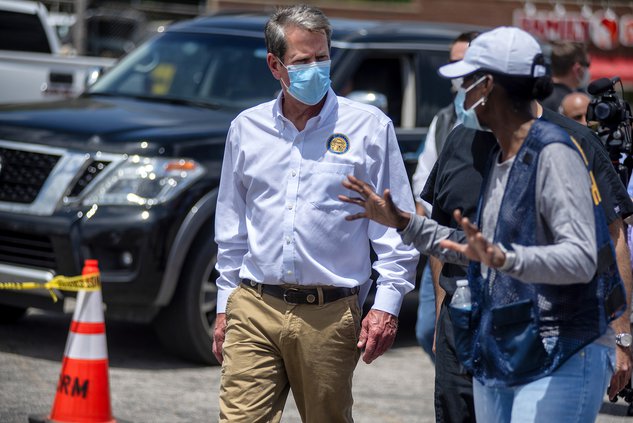The Northeast Georgia Health System is sponsoring coverage directly related to public safety so that it can be made available free to non-subscribers as a public service. News coverage is independently reported. We know that you need accurate and up-to-date information about the effects of the coronavirus in the state and our region. Please consider supporting our work by subscribing to The Times.
In two executive orders signed Monday, June 29, Gov. Brian Kemp extended Georgia’s public health state of emergency and safety measures to reduce the spread of COVID-19.
The state of emergency, which allows for the government to coordinate with businesses for supplies, testing and other resources, will be extended through Aug. 11. The safety requirements, which had been due to expire June 30, have been extended through July 15.
The state Department of Health reports that 81,573 have tested positive for the virus, which is 8.3% of tests reported to DPH. A seven-day moving average shows an increase in cases statewide, with that average being 757 June 1 and 961 June 14; data for the past 14 days is considered incomplete as not all results have been reported.
In Hall County, the June 1 average was 17.6 and on June 14 it was 24.4. More than 3,000 cases total have been confirmed in Hall since the beginning of the pandemic and 59 have died.
According to Dave Palmer, public information officer for District 2 of DPH, state testing centers in Hall County saw 333 new positive cases of COVID-19 from June 12 to June 24, up by nearly 100 new cases from the previous 14-day period. Palmer added that the number only reflected tests done by the DPH, omitting tests carried out by private providers, and the actual number could be “up to three times that number on a given day as far as testing.”
Northeast Georgia Health System said Friday, June 26, there has been an increase in new cases.
“We also saw the number of confirmed positive patients currently being treated in our hospitals creep up to 75 on Wednesday, which is the highest it’s been since late May,” hospital spokesman Sean Couch wrote in an email.
NGHS, which treats those from Hall and surrounding areas, has reported 112 deaths and 961 patients discharged total. On June 29, it was treating 61 patients who have tested positive, with 34 of those at the Gainesville hospital. Numbers were down to 46 on June 15, well below a height of 159 on April 29.
Health experts are continuing to ask people to protect themselves through avoiding gatherings larger than 25 people, staying home when possible, wearing masks in public places, maintaining social distancing, washing hands regularly, covering coughs and calling for health care information when needed.
The executive order bans gatherings of more than 50 people unless there is six feet between each person, outlines mandatory safety criteria for businesses, and requires sheltering in place for people living in long-term care facilities and the medically fragile. It also requires the State Board of Education to provide guidance for operation of public schools in accordance with guidance from the Georgia Department of Public Health and the American Academy of Pediatrics.
"As we continue our fight against COVID-19 in Georgia, it is vital that Georgians continue to heed public health guidance by wearing a mask, washing their hands regularly, and practicing social distancing," Kemp said in a statement. "… While we continue to see a decreasing case fatality rate, expanded testing, and adequate hospital surge capacity, in recent days, Georgia has seen an increase in new cases reported and current hospitalizations.”
Palmer said the DPH believes a general relaxation by the public on preventative measures is likely to blame for the increase in cases.
“I think a lot of people let their guard down, so to speak, when things started opening back up,” he said. “They took that as that they didn’t need to still follow the mitigation factors. A lot of people quit wearing masks. We had large gatherings that were over 50 people where there were people close together at beaches, the protests, other areas where people didn’t really follow the social distancing, the wearing of masks, those types of things. I think that has contributed to the rise in our numbers.”
Palmer added that the number of cases is likely to continue increasing until people start taking mitigation strategies more seriously.
“We’re trying to educate people and push the message out there, continue to social distance, now more than ever, as we start opening things back up,” he said. “People need to be following those strategies.”
Times reporters Nick Watson and Nathan Berg contributed.

